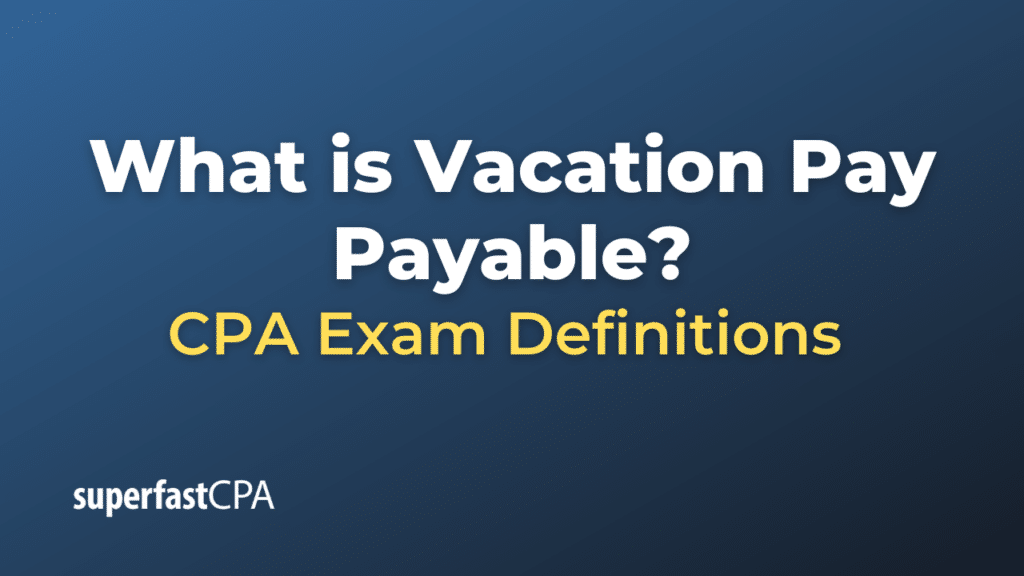Vacation Pay Payable
“Vacation Pay Payable” is a liability account on a company’s balance sheet that represents the amount the company owes to its employees for accrued but not yet taken vacation time. Essentially, it’s money that is set aside to pay employees when they take time off for vacation, as per the company’s vacation policy or contractual obligations.
As employees accrue vacation days or hours based on their employment agreement or company policy, the company needs to account for this growing financial obligation. Each period (usually monthly or bi-weekly, coinciding with payroll cycles), the company will make an accounting entry to increase the “Vacation Pay Expense” account and the corresponding “Vacation Pay Payable” account.
Here is how it typically works in accounting terms:
- Accrual of Vacation Time: As employees earn vacation time, an accounting entry is made to recognize the expense and the associated liability.
- Debit: Vacation Pay Expense (income statement account)
- Credit: Vacation Pay Payable (balance sheet account)
- When Vacation is Taken: When an employee actually takes a vacation, the “Vacation Pay Payable” liability is reduced, and the cash or bank account is also reduced to reflect the payment made to the employee.
- Debit: Vacation Pay Payable (reducing the liability)
- Credit: Cash/Bank (reducing the asset)
Example of Vacation Pay Payable
Let’s walk through a fictional example to illustrate how the “Vacation Pay Payable” account functions in a company’s accounting system.
Company: ABC Enterprises
Vacation Policy: Employees at ABC Enterprises earn one day of vacation for each month worked. Each employee’s daily wage is $150.
Scenario 1: Accruing Vacation Pay for Employee Jane
Employee: Jane has worked at ABC Enterprises for 4 months and has not yet taken any vacation.
- Accruing the Liability:
Each month, ABC Enterprises needs to account for Jane’s earned but unused vacation time.- Journal Entry per Month:
- Debit: Vacation Pay Expense $150
- Credit: Vacation Pay Payable $150
- Journal Entry per Month:
- Total Liability After 4 Months:
- $150/day x 4 months = $600
Scenario 2: Jane Takes a Vacation
Vacation: Jane decides to take 2 days off.
- Payment for Vacation Days:
Jane’s taking 2 days off means the company will have to pay her $300 (2 days x $150/day).- Journal Entry:
- Debit: Vacation Pay Payable $300
- Credit: Cash $300
- Journal Entry:
- Remaining Liability:
- Original Liability: $600
- Vacation Taken: $300
- Remaining Liability: $300
Scenario 3: End-of-Year Accounting
Let’s say ABC Enterprises has a policy where employees can carry over unused vacation days to the next year. At the end of the year, there would be no need for any adjustments to the “Vacation Pay Payable” account regarding Jane if she hasn’t used her remaining days. The $300 would just roll over into the next accounting period.
This is a simplified example. In a real-world setting, other factors could come into play, such as variations in pay rate, part-time employment, or the existence of a cap on how much vacation time can be accrued. However, the basic principles of accounting for “Vacation Pay Payable” would remain the same.













